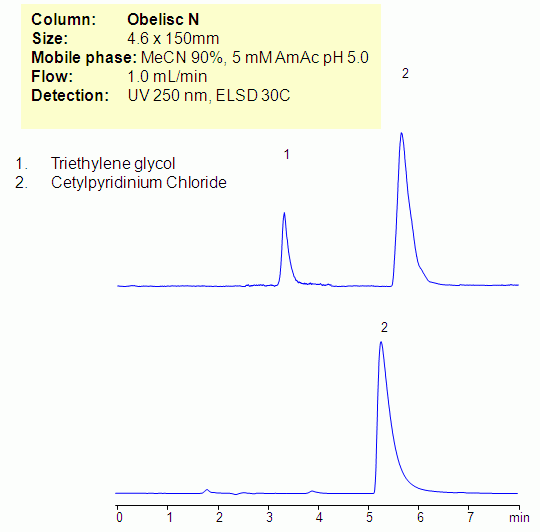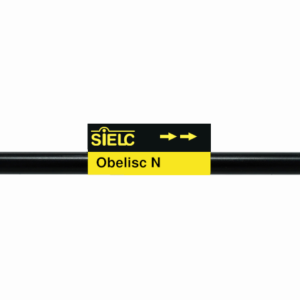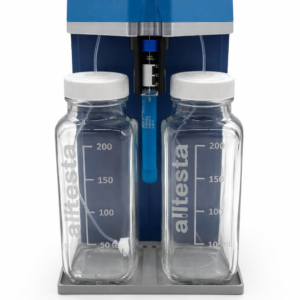
Cetylpyridinium chloride is hydrophobic basic compound and triethylene glycol is hydrophilic neutral compounds. Quantitative analysis of both compounds is problematic due to a different nature of these two analytes. Both compounds were analyzed on an Obelisc N column in HILIC/cation-exchange mode. Cetylpyridinium chloride is retained by cation-exchange mechanism, and triethylene glycol is retained by HILIC mechanism. Mixed-mode HILIC approach allows to retain compounds either based on multiple or single mechanisms interaction, thus providing a valuable approach for analysis. Cetylpyridinium chloride and triethylene glycol can be monitored by combination of UV and ELSD/CAD.
| Column | Obelisc N, 4.6×150 mm, 5 µm, 100A |
| Mobile Phase | MeCN/H2O |
| Buffer | AmAc ph 5.0 |
| Flow Rate | 1.0 ml/min |
| Detection | UV 250nm, ELSD |
| Class of Compounds |
Surfactant, Hydrophobic, Ionizable |
| Analyzing Compounds | Triethylene glycol, Cetylpyridinium Chloride |
Application Column
Obelisc N
SIELC has developed the Obelisc™ columns, which are mixed-mode and utilize Liquid Separation Cell technology (LiSC™). These cost-effective columns are the first of their kind to be commercially available and can replace multiple HPLC columns, including reversed-phase (RP), AQ-type reversed-phase, polar-embedded group RP columns, normal-phase, cation-exchange, anion-exchange, ion-exclusion, and HILIC (Hydrophilic Interaction Liquid Chromatography) columns. By controlling just three orthogonal method parameters - buffer concentration, buffer pH, and organic modifier concentration - users can adjust the column properties with pinpoint precision to separate complex mixtures.
Select optionsTriethylene Glycol
UV Detection





